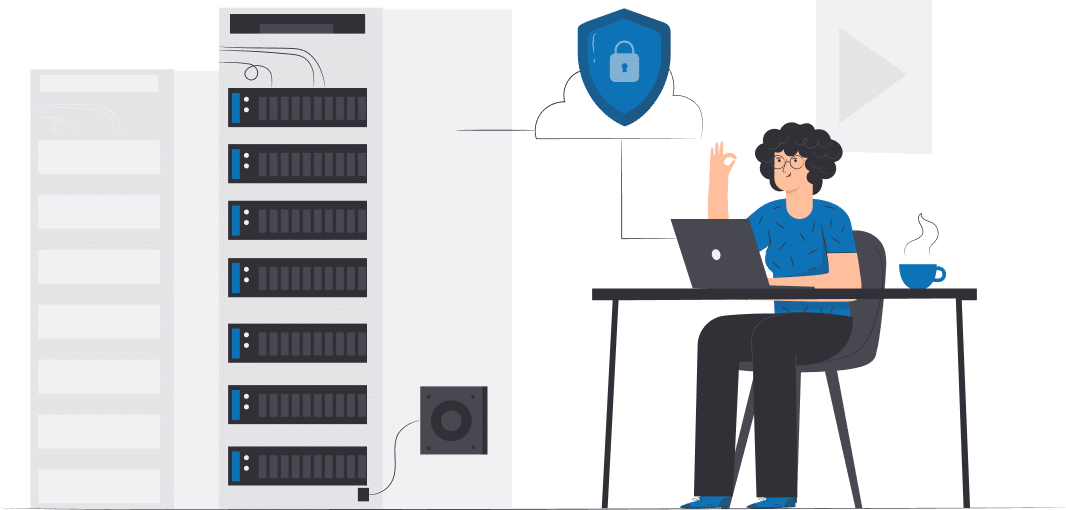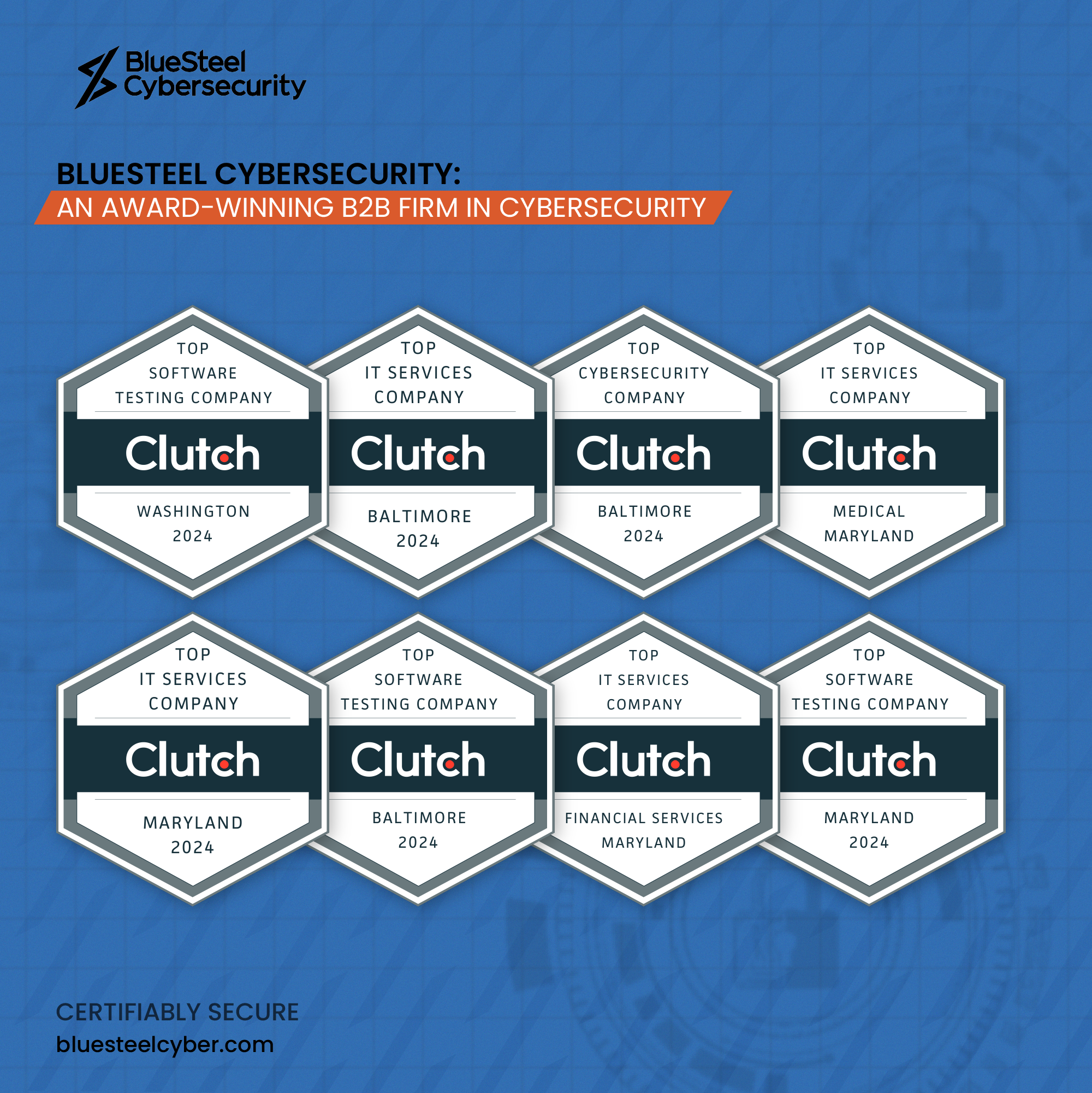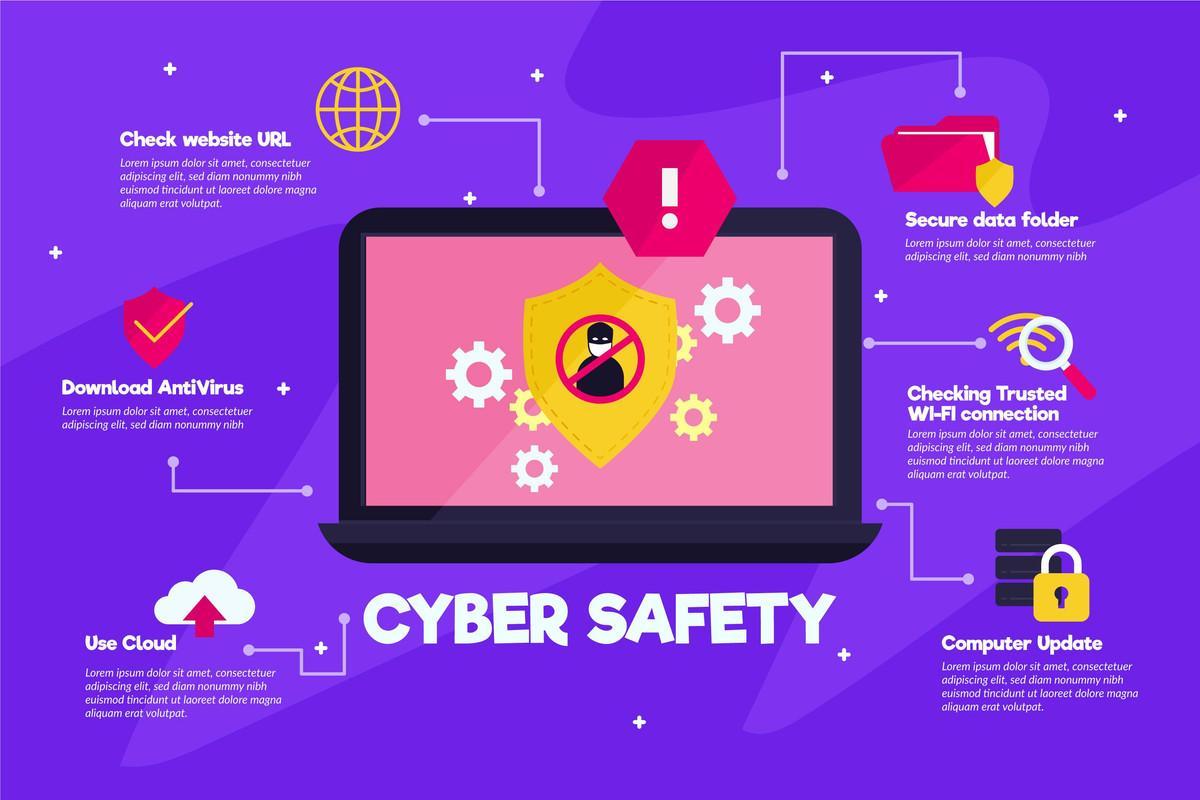HITRUST certification is a crucial process for organizations, especially in this digital world. Data security and privacy are things any organization must take seriously.
HITRUST is a not-for-profit organization tasked with ensuring organizations manages their information risk. The word HITRUST stands for the Health Information Trust Alliance. Even though many people believe the organization works in the health industry, that’s not really the case. HITRUST works across different industries and organizations to help them with data management, information risk, and compliance.
However, organizations find it hard to navigate the complicated HITRUST certification requirements. This article will act as a comprehensive guide to outline the aspects of the HITRUST certification process and offer valuable insights for organizations that need to ensure they’re compliant.
Table of Contents
Overview of HITRUST Certification Requirements
Any organization that seeks to achieve HITRUST certification must understand the comprehensive requirements of demonstrating its commitment to data security and privacy. The certification involves risk management, information protection, and incident report protocols. These protocols act as a HITRUST requirements checklist that outlines the steps organizations must take to ensure compliance with the rigorous standards of HITRUST.
Meeting HITRUST certification requirements should not be taken lightly. Getting HITRUST certification proves that an organization has adhered to rigorous security and privacy standards such as navigating robust HITRUST password requirements and implementing secure access controls.
The HITRUST Common Security Framework (CSF), serves as the foundation for achieving certification. It’s a roadmap to data security and compliance for organizations that create, access, store, or exchange sensitive information.
Importance of HITRUST Certification
In today’s digital landscape, data security is paramount. HITRUST certification provides organizations with several crucial benefits:
- Enhanced Credibility: Earning HITRUST certification shows that the organization is committed to protecting sensitive data. This gesture is sure to earn the trust of customers and business partners.
- Reduced Risk: The digital landscape is full of risks of information leakage and other cyber threats. Adhering to the HITRUST CSF validation reduces the risk of data breaches and security incidents for organizations.
- Improved Efficiency: The HITRUST framework ensures organizations establish and maintain strong security practices. With robust security, organizations are sure to increase their efficiency in handling security operations.
HITRUST Framework
HITRUST CSF is the framework that serves as a cornerstone for certification. HITRUST doesn’t force its security philosophy on the users, which makes it easy to consolidate existing public domain security frameworks into one document. All the industry frameworks, regulations, standards, and requirements are put together into a central control repository.
What this means is that organizations don’t have to use NIST, HIPAA, HITECH, and many other frameworks and end up wasting resources. HITRUST ensures these organizations only have to carry out a single assessment to know their compliance status. The goal is to harmonize compliance requirements.
It’s also important to note that the HITRUST framework considers every organization’s needs and doesn’t apply the same process and requirements across all industries. The framework is flexible and takes into consideration the security and privacy professionals.
The framework comprises a comprehensive set of security controls, which are categorized under different domains:
- Risk Management
- Information Security Program
- Data Protection & Privacy
- Incident Management
- Business Continuity & Disaster Recovery
- Third-Party Assurance
- Incident Management
- Compliance
The certification requirements of HITRUST are mapped according to its framework, requirements, and regulations. The controls offer a clear roadmap for the organization to comply with the security standards and regulations of other frameworks such as HIPAA, PCI DSS, and GDPR.
Preparing for HITRUST Certification
Meeting HITRUST certification requirements will not be a complex process if you follow the systematic approach outlined below.
1. Assessment of Current Security Controls
Organizations should identify gaps or perform a self-assessment analysis to determine existing security gaps. When you realize that your current security controls don’t align with HITRUST CSF requirements, you will have enough time to address them in order to make necessary improvements and review the resources needed for the process.
2. Identify Gaps and Remediation
The self-assessment will allow the organization to identify gaps and remedy them beforehand. Each organization will have to update policies and procedures to ensure they align with the requirements of HITRUST CSF certification. Remediation may involve updating data protection measures you already have in place, training staff, and reviewing the available resources.
3. Establish a Project Plan
At this stage, the organization may choose to work with an experienced HITRUST CSF Assessor to help come up with a well-defined plan for their HITRUST certification requirements. This may involve outlining the steps, resources, and timeline for achieving compliance. A well-detailed project plan is crucial for successful implementation.
HITRUST Common Security Framework (CSF) Controls
To achieve certification, it is important to understand the HITRUST CSF controls. HITRUST works with 19 high-level subject areas, which can also be referred to as control domains. Some of these controls include:
- Access Control
- Audit Logging & Monitoring
- Third-Party Assurance
- Data Protection & Privacy
- Incident Response
- Business Continuity & Disaster Recovery
- Physical & Environmental Security
- Password Management
- Information Protection Program
- Education, Training & Awareness
- Endpoint Protection
- Mobile Device Security
- Network Protection
- Configuration Management
- Wireless Security
- Portable Media Security
- Vulnerability Management
- Transmission Protection
- Risk Management
HITRUST recognizes that achieving a goal for every organization is unique because not every organization is the same size and each is exposed to different risks. For that reason, every control comes with different requirement levels tailored to the specific organization.
Every organization must map the controls in their compliance efforts and implement them well. Consider the self-assessment certification stage where what you think your organization needs will determine the requirement levels you need.
HITRUST Risk Management Process
Risk management is an essential step in HITRUST compliance. Organizations must recognize their weaknesses and make improvements to their policies and procedures. Risk management is more about understanding vulnerabilities and adopting controls that will tackle emerging threats. Risk management takes the form of:
- Conducting Risk Assessment: Organizations should start by identifying potential security threats that may affect their data and systems. Risk assessment gives the organization a better insight into both internal and third-party risks.
- Developing Risk Management Strategies: Knowing the potential risks that an organization may face gets them prepared and ready to tackle them. After identifying the risks, the organization can now come up with strategies to mitigate and manage them effectively.
HITRUST Policies and Procedures
HITRUST compliance requirements cover the implementation of best practices in terms of policies and processes. These include:
- Aligned with HITRUST Requirements: The controls in the HITRUST CSF should be specifically deliberated in the actions to be taken by such policies.
- Communicated to Employees: The company should incorporate the understanding of all the policies and procedures in the training program for all the employees.
HITRUST Security Incident Response
Organizations must build a strong incident response plan. The plan will play a vital role in remedying security incidents. The plan should address:
- Incident Detection and Reporting: Procedures for the timely detection and reporting of security incidents should be articulated.
- Containment and Eradication: Putting a plan together to stop the escalation while mitigating the damage.
- Recovery and Remediation: Installing processes for restoring polluted systems and implementing corrective actions, respectively.
Implementing HITRUST Technical Requirements
Organizations should measure their technological framework against the technical measures listed in the HITRUST CSF to ensure the functioning of their existing technical infrastructure in the first place. This step might demand further technical solutions that could have been overlooked in a prior analysis, including:
- Assessing Existing Technical Infrastructure: The first step is to make an inventory of all the equipment and technology resources currently in use. To achieve this, we should target the identification of systems devices, review security controls, and then map these with standards and policies.
- Implementing Technical Solutions for Compliance: From the results of the assessment, the organizations are able to introduce technical remediation as a tool to address and bring the system to standards. It could mean having the old ones replaced or implemented through the technical integrations of all the security tools.
HITRUST Training and Awareness
Every organization must ensure its employees fully understand what they have to do to maintain HITRUST compliance requirements. This can only be achieved through constant training and awareness programs. The programs must be:
- Comprehensive: The programs must cover various aspects of security awareness. These can include data handling and incident reporting.
- Periodically Refreshed: Keeping employees regularly updated on security threats gets them well-prepared. These sessions need periodic updates because things change every day.
Third-Party Vendor Management
Third-party vendors also expose employees to security risks they must be aware of. Third-party vendor management involves:
- Evaluating Third-Party Vendor Risks: Organizations need to assess the security risks and compliance procedures of their third-party vendors.
- Implementing Vendor Management Strategies: Organizations must ensure their third-party vendors adhere to the security requirements in order to keep everyone safe.
HITRUST Assurance and Reporting
1. Assessing Assurance Requirements
Before delving into the assessment process, you must understand the importance of assurance requirements. They will determine the type of assessment the organization needs to get certified.
2. Preparing for HITRUST Assessments
The assessment needs proper preparation which includes:
- Gathering all the necessary documents such as policies, procedures, and risk assessments.
- Carrying out mock assessments to stimulate the actual assessment processes to identify potential mistakes ahead of time.
- Communicating with the assessment firm for smooth execution.
3. Generating HITRUST Compliance Reports
HITRUST compliance reports demonstrate the organization’s adherence to the requirements. The reports contain assessment results, plans for remediation of gaps, and evidence of control implementation.
Understanding the HITRUST Audit Process
The audit process takes place when an independent firm evaluates the organization’s security against HITRUST CSF. The process involves:
- On-site and off-site assessments: The assessment firm will review documentation, interview personnel, and observe security controls.
- Detailed report: The report outlines the findings of the assessment, including any identified non-conformities.
Engaging with a HITRUST Assessment Firm
Organizations seeking certification need to engage with a qualified HITRUST assessment firm. This firm will guide them through the assessment process and ensure it adheres to established standards.
HITRUST Continuous Monitoring and Improvement
Achieving HITRUST certification is not the end of everything; organizations should not relax. The certification needs continuous monitoring, which ensures;
- Tracking and reporting compliance: Regularly monitor their security posture and report findings to relevant stakeholders.
- Identify areas for improvement: Continuously identify and address any emerging security risks or gaps in compliance.
HITRUST Compliance Audits and Certifications
1. The Process of Certification
Once the organization completes the assessment process and addresses any concerns, it then receives the certification. The certification acts as evidence that the organization adheres to all the standards in the HITRUST CSF.
2. Maintaining Compliance Post-Certification
Even after certification, organizations still need to maintain HITRUST compliance requirements. They need to regularly update their policies and procedures, conduct risk assessments periodically, and train and provide awareness to their employees.
3. Renewal and Recertification Process
HITRUST certifications remain valid for a period of about one year. Organizations will need to renew their certificates to remain certified. One thing is for sure though; the HITRUST renewal and recertification process is not as rigorous as the certification process.
Resources and Tools for HITRUST Compliance
There are several resources and tools that organizations need to ensure HITRUST compliance requirements. Some of them include:
- HITRUST Alliance website: Provides comprehensive information, guidance, and resources on HITRUST certification.
- HITRUST CSF resources: Offers detailed explanations of the framework controls and compliance requirements.
- Compliance management tools: Software solutions can automate tasks, streamline compliance efforts, and facilitate reporting.
Conclusion
Navigating the path toward HITRUST certification requirements may not seem smooth, but it mainly involves understanding the process and the HITRUST requirements. By undergoing the process, organizations will be navigating a clear path towards continuous compliance which enhances their security posture and earns them trust among partners.
It’s also important to understand that security measures continue to evolve in the digital world. Cyberthreats are getting complicated by the day and without proper security, organizations will be exposed to bigger risks. HITRUST certification is the only thing that will ensure organizations have the right security measures in place. It ensures continuous commitment to data security and privacy.
Head to our website to begin your HITRUST certification journey with Bluesteel Cybersecurity today!
Frequently Asked Questions (FAQs) about HITRUST Certification Requirements
HITRUST certification is a comprehensive process that demonstrates an organization’s commitment to data security and privacy. It’s important because it helps organizations establish robust security measures, earn credibility, reduce risks of data breaches, and improve efficiency in handling security operations.
Any organization that handles sensitive data and prioritizes data security and privacy should consider obtaining HITRUST certification. While initially developed for the healthcare industry, HITRUST certification is relevant across various sectors.
The HITRUST CSF serves as a roadmap for organizations to achieve compliance with data security standards. It consolidates various industry frameworks, regulations, and standards into a single control repository, making compliance more manageable.
The preparation typically involves assessing current security controls, identifying and remediating gaps, establishing a project plan, and understanding HITRUST CSF controls. Organizations may also choose to work with experienced HITRUST CSF Assessors for guidance.
HITRUST CSF controls cover a range of domains including risk management, information security program, data protection & privacy, incident management, business continuity & disaster recovery, third-party assurance, compliance, and more.
Risk management is integral to HITRUST compliance as it involves identifying vulnerabilities, developing strategies to mitigate risks, and continuously monitoring and managing security threats.
HITRUST compliance audits involve independent firms evaluating an organization’s security against HITRUST CSF. This includes reviewing documentation, interviewing personnel, and assessing security controls both on-site and off-site.
HITRUST certification typically lasts for about one year. Organizations must renew their certificates to remain certified. While the renewal process is not as rigorous as initial certification, organizations must maintain compliance and address any updates or changes.
Yes, there are various resources and tools available, including the HITRUST Alliance website, HITRUST CSF resources, and compliance management tools. These resources provide guidance, explanations of framework controls, and assistance with compliance efforts.
Achieving HITRUST certification can lead to enhanced credibility, reduced risk of data breaches, improved efficiency in security operations, and increased trust among customers and business partners. It also ensures continuous commitment to data security and privacy.







